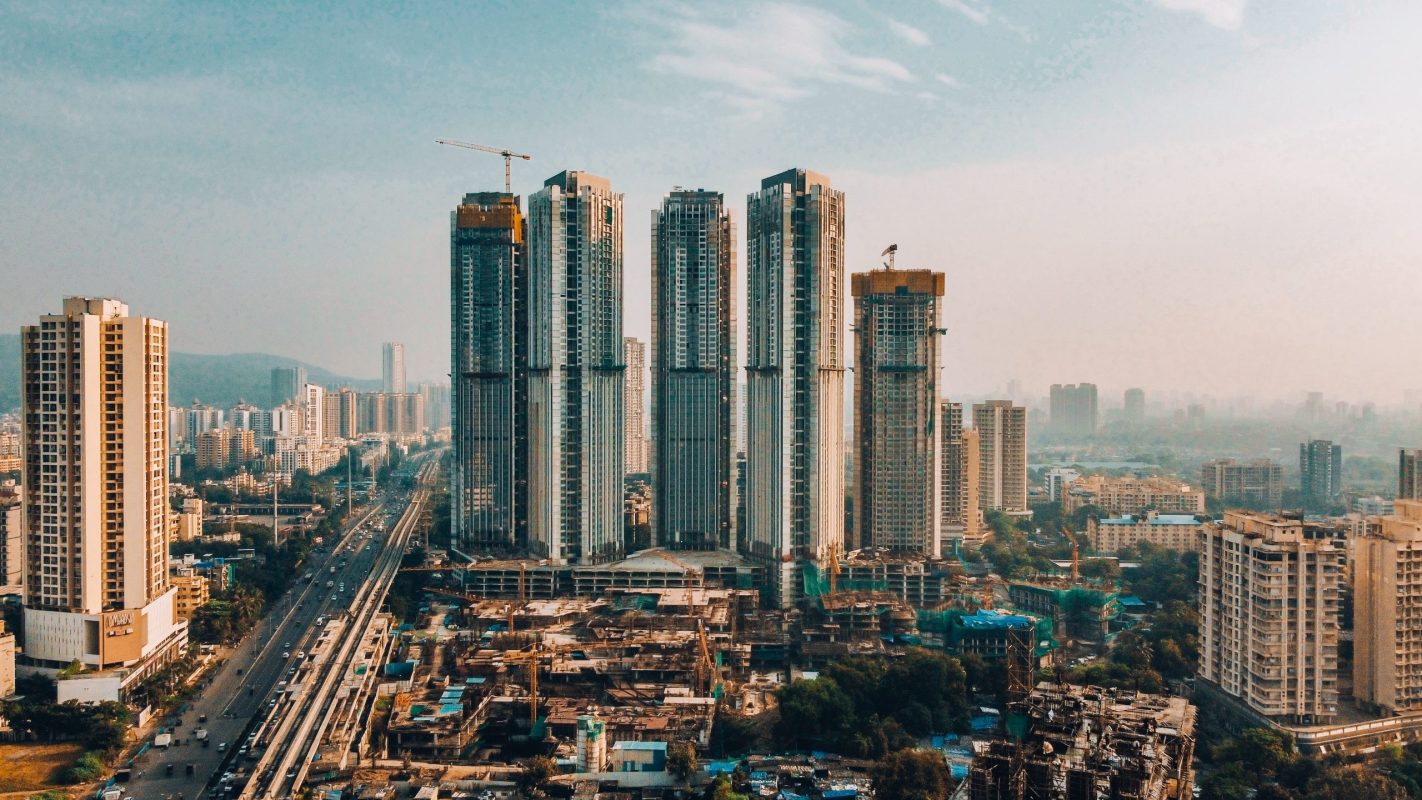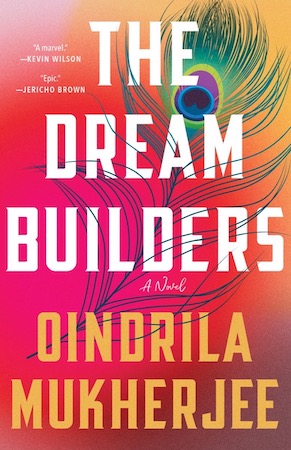Reading Lists
7 City Novels in Which Real Estate and Urban Planning Are the Heroes and Villains
Stories about individuals facing change as they are torn between past and future, tradition and modernization

Electric Lit is just $7,000 away from our year-end fundraising goal of $35,000! We need to hit this target to get us through the rest of 2025, and balance the budget for 2026. Please give today! DONATE NOW.
From Gothic castles and country manors to idyllic cottages and childhood homes, houses in literature have helped evoke atmosphere, shape characters’ personalities, and change their lives. It’s easy to recall famous literary houses. Pemberley, Gatsby’s mansion, Howard’s End, Green Gables, the little house on the prairie, and other beloved homes are sometimes better remembered than the people who lived in them. But in the late 20th century, writers like JG Ballard moved away from the romantic, nostalgia-inducing houses to the type of real estate that characterizes modern cities. High-rises and apartment blocks began to alter the literary skyline. Contemporary novels set in large, crowded cities around the world can hardly ignore the features and effects of urban—and suburban—planning. Issues such as gentrification, displacement, and economic inequality form the backdrop to stories of individuals facing change as they are torn between past and future, tradition and modernization. In these novels, the city, with all its contradictions, is often the central character.
My debut novel The Dream Builders, set in a fictional city in India, follows the lives of ten different characters over the course of a single scorching summer. Hrishipur is known for its real estate developments and is dotted with upscale malls, luxury hotels, gleaming office buildings, and gated high-rise communities. Among the many constructions in various stages of completion, is a new one that is the talk of the town—Trump Towers. This particular property elicits different emotions from different people —desire, envy, wrath. At first glance, the privileged, upwardly mobile residents of Hrishipur are cocooned from the troubles plaguing the rest of the country. But they are not the only ones living there. It is the invisible working class that keeps the city functional. The relentless pursuit of material wealth and modernization has only widened the chasm between the haves and the have nots. But even as tensions rise, it becomes clear that all the characters have a few things in common. They are all keeping secrets. They all want things they cannot have. And ultimately, they are all trying to survive in this rapidly changing world.
The seven novels listed below are set in seven different cities of the world. I did not want to repeat a city (or even a country.) However, this means that I was able to include only one book written by a woman. One of the discoveries I made while working on this list is that there appear to be relatively few novels by women that deal with urban design and real estate development. As it happens, real estate developers portrayed in novels almost always tend to be male. This makes me wonder about who is drawn to write about the subject matter and why. I hope this list becomes more gender inclusive in the future.
Mumbai: Last Man in Tower by Aravinda Adiga
In his second novel, the Booker Prize winning author once again takes on class divisions in contemporary India. The residents of Vishram Society, a venerable old apartment complex in a middle-class suburb of Mumbai, are suddenly confronted with an unexpected offer. Dharmen Shah, a powerful self-made real estate developer, offers to buy them out so he can demolish the crumbling structure to make way for the luxury high-rise of his dreams: the Shanghai. One by one we learn of the lives and struggles of the residents who have, until now, cohabited peacefully. Most of them agree to sell their flats for the fortune that is guaranteed to improve their lives. But a handful resist, including the retired schoolteacher, Masterji, who cherishes the memories of his late wife and daughter in the flat where he has lived for over three decades. But in this world of ruthless builders and redevelopment schemes, is resistance even possible?
The clock ticks for both Shah whose health is deteriorating fast, and for the residents of Vishram who must yield before October 3 or forever relinquish their dreams of a better life. The tensions between the neighbors rise, with loyalties and old friendships being put to the test. As the deadline looms and pressure mounts from Shah and his sinister associates, Masterji is left alone to make up his mind, in a world that has grown increasingly hostile. In this grittily realistic book, every character is human, even when they do monstrous things. In the backdrop is the maelstrom that is Mumbai. Where there are few degrees of separation between mafia, businessmen, movie producers, law enforcement officials, and politicians. Where everyone wants something, where everything can be bought. Or can it?
Instanbul: A Strangeness in My Mind by Orhan Pamuk, translated by Ekin Oklap
No one writes about contemporary city life better than Pamuk. In this novel, young Mevlut Karatas moves from his village to Istanbul to help his father sell yogurt by day and boza, a traditional Turkish drink, by night. In the city, the villagers occupy lands illegally and hastily erect houses overnight to prevent the government from seizing them. In a city where success is measured by ownership of property, Mevlut’s father only manages to build a one-room house, while his uncle and others make a fortune. We follow Mevlut through the decades as he falls in love, becomes a husband and father, and tries one job after another in the hope of one day becoming rich.
The novel’s unique structure sets the third person omniscient sections against brief first-person accounts by Mevlut’s relatives and friends. The many political and social changes witnessed in Turkey during Mevlut’s lifetime are woven into the sweeping narrative. As the city undergoes massive development and modernization, vendors are pushed off the streets, their wares and carts rendered obsolete. The old city is erased by demolitions, buildings, billboards, shops, tunnels and flyovers. The migrant workers’ hastily built “gecekunde” homes are demolished to make way for new towers that are thirty or forty floors high and offer a view of the Bosphoros. Against this gradual transformation, the boza seller becomes an anachronism, and boza a reminder of Turkey’s traditions and history. Mevlut, a sensitive and brooding man, walks in the historic neighborhoods, past old buildings and cemeteries, yearning for the old, mossy walls, ancient fountains covered in beautiful script, and wooden homes, which have all been replaced by neon-lit shops, apartment blocks, concrete houses, and new streets. The city, to him, has become a “faithless space.”
London: Capital by John Lancaster
The houses on Pepys Road were originally built for working-class families, but gradual gentrification has changed the demographic and led to property values skyrocketing. Among the residents living there before and after the Great Recession of 2008-09 are Petunia, an elderly widow whose house is a relic with its linoleum floors and overgrown garden, and Roger Yount, an investment banker who needs his seven-figure bonus to help maintain his family’s lavish lifestyle. But one of the most fascinating features of Pepys Road, like much of London, is the arrival of immigrants. They include the Kamal Brothers from Pakistan, who own the cornershop, an undocumented immigrant from Zimbabwe who lives in a house for refugees, an unromantic Polish handyman who does repairs for rich people like the Yountses, and a young soccer prodigy from Senegal who has been snapped up by Arsenal. Their lives seem for the most part to be segregated, until something curious happens. The residents begin to each receive a postcard —with a photo of their front door and a simple but clear message—We want what you have. A message that sets off events that threaten to bring the property prices down, thereby forcing the neighbors to rally together. The drama escalates when a young police officer gets assigned the case of the mysterious postcards, and some of the residents become suspects. While different sections focus on different characters who vary in age, ethnicity, religious background and financial status, the overarching narrative voice provides a kaleidoscopic view of the community. We zoom in and out, getting to know the individuals who are all dealing with their own problems in this entertaining and insightful satire about capitalism, greed, and class wars.
New York City: Neruda on the Park by Cleyvis Natera
Natera’s debut novel is set in Nothar Park, a fictional neighborhood in Upper Manhattan and home to a community of Dominicans. The neighborhood finds itself under threat when an old tenement building is demolished to make way for luxury condominiums. The tenants next door, including the Guerrero family, are offered buyouts. Meanwhile, Luz Guerrero, an only child and ambitious Ivy League-educated lawyer, has secretly been investing all her savings in a dream house back in the D.R. for her mother Eusebia, when she suddenly loses her job. On the news the body of a young boy is reported to have been found with a message carved into his body—Go Home. The looming construction unsettles everyone in Nothar Park, but none more so than Eusebia, the stoical bearer of unimaginable losses. After an accidental fall that changes her personality, she resolves to stop the construction at any cost. What she doesn’t know is that Luz’s new boyfriend is the wealthy developer himself. And what Luz doesn’t know is what her mother has ever really wanted. What follows is a suspenseful narrative, as Eusebia’s psychotic impulses compel her to take bigger and bigger risks, escalating the level of violence in the neighborhood. The chapters alternate between Luz, her mother, and The Tongues—a trio of Dominicanas who know all the neighborhood gossip and whose Chorus-like voices provide an overview of the community. The novel explores themes of immigration and gentrification, as well as class and race divisions in New York City, not just through the dynamics of the Guerreros and their friends, but also through the romantic relationship unfolding between Luz and her white millionaire boyfriend. And ultimately it asks where home really is for immigrant families and what is truly worth fighting for.
Seoul: At Dusk by Hwang Sok-Yong, translated by Sora Kim-Russell
Renowned architect Park Minwoo managed to raise himself out of poverty through education and hard work, to eventually own his own architecture firm. His friends and associates are wealthy, powerful developers and architects, many of whom are close to government officials. Despite his fame and fortune, Minwoo finds himself alone as he ages, after his wife goes to live with their daughter in America, with no intention of returning to him. One day, after delivering a lecture on urban design, he meets a young woman called Jung Woohee who hands him a note from his childhood love Cha Soona. An email correspondence with Cha ensues where she begins to tell Minwoo the story of her life. In the meantime, the construction industry is going through a slump, and some of the companies Minwoo’s firm is building projects for are embroiled in corruption and financial troubles.
The chapters alternate between his account and that of Jung, a struggling young actress who works in a grocery store to pay the bills. She lives in a dreary one-room apartment with mouldy, damp walls. Her connection to Cha Soona binds her to Minwoo. The novel provides a look at contemporary Seoul through the eyes of two characters from different generations, genders, and classes. As Minwoo revisits his past, through Cha Soona’s emails, he is forced to reflect on the choices he has made. He must reconcile with the fact that he has been complicit in the urban planning and modernization process that been responsible for demolishing slums, relocating people, and destroying the past in order to make concrete and steel structures all over the city. The soullessness of Modern Seoul compels Minwoo to consider the question: Is there any humanity in architecture?

Dubai: The Dog by Joseph O’Neill
In this irreverent novel that was longlisted for the Booker Prize, O’Neill describes the life of the American expat in a city seldom represented in fiction. The narrator, an unnamed attorney, has fled New York to work in Dubai for the absurdly wealthy Batros Brothers. He lives in a luxury apartment complex called The Situation on an inlet of the world’s largest manmade lagoon. From his window, he can see the abandoned project that was supposed to be the tallest residential building in the world. The “desert metropolis,” he tells us, is a place where some massive structure or other is constantly being built. At work, his role is vague and includes supervision of the new intern—his boss’ young son. At home, he drafts imaginary emails to his bosses, ruminates on his failed marriage, and watches porn. Occasional forays out of his sterilized apartment involve international prostitutes and equally disillusioned fellow expats.
The narrator’s self-deprecating humor and rambling asides conceal a keen sense of empathy. This is a person who really wanted a dog and was perfectly content with living in a two-roomed rent-controlled apartment in Gramercy. He is aware of the many social issues in the Emirates, such as the classism that keeps immigrant workers like Bidoon the valet subservient. And above all else, he is aware of the reductive stereotypes of Dubai portrayed by the Western media. Dubai’s modernity and its vulgar display of wealth feel dystopian, but both the narrator and we are forced to consider whether the New York he has left is any better. This is a study in ethics and morality, and the existential crisis that haunts people when their lives are filled with material pursuits.
Vancouver: Property Values by Charles Demers
Comedian Charles Demers clearly knows how to make people laugh, even when he is writing about a dark and twisted suburban world. The world in question is that of Vancouver where real estate prices have escalated beyond belief. Scott Clark is faced with the prospect of his former father-in-law trying to sell Scott’s house which he half owns. Too broke to buy his father-in-law out, and worried about losing the childhood home, Scott hatches a plan. He and his best friends will stage a drive-by shooting to bring the property value down. But the plan goes horribly wrong when Scott’s heavily tattooed neighbor, a member of a motorcycle gang, discovers that his property too has depreciated overnight. Soon, Scott and his friends find themselves embroiled in fierce inter-gang rivalry.
This short novel is a hilarious take on the crime novel genre. Not surprisingly for an author who has founded an imprint for comic writers, the dialogue is funny. The cast of characters reflects Vancouver’s diversity. The Da Silva gangster brothers are from Goa. Scott’s friend Josiah is of mixed Asian heritage, while Pardeep’s family is originally from Punjab but now owns a Greek restaurant. The friends nearly always eat ethnic food, and their dialogue is sprinkled with ethnic slang. Despite the fast-paced plot twists and absurd humor, there is an underlying poignancy throughout. The friends’ loyalty towards one another, Scott’s memories of his deceased mother, and his budding romance with a local crime reporter, all demonstrate the human side of this real-estate obsessed city. Ultimately Scott must choose between staying and moving, past and future. And surely, Demers, who is known for his political activism, should get some brownie points for beginning his book about real estate with a land acknowledgement.









